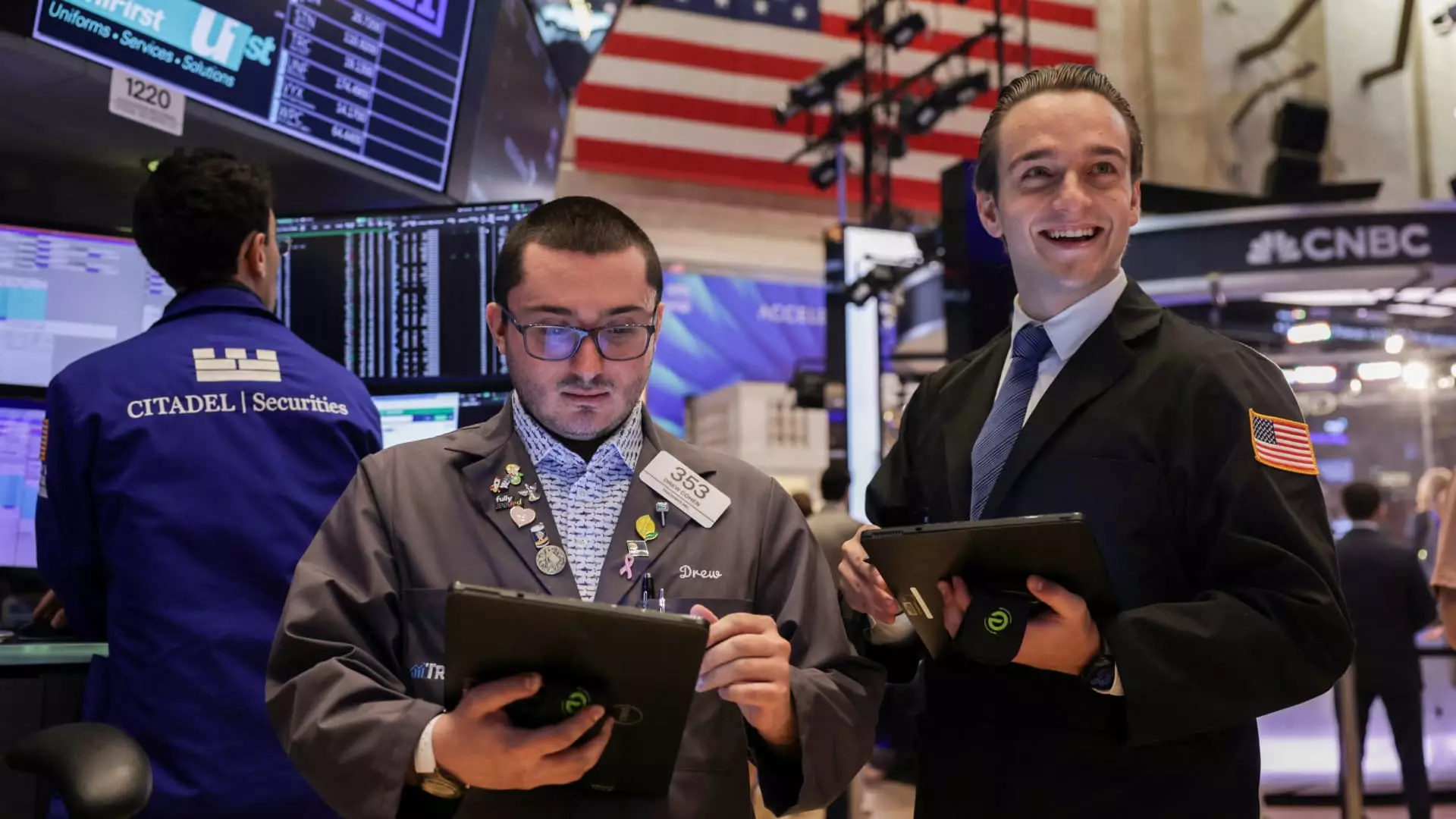The recent surge in the stock market has seemingly painted a picture of unending growth, driven by a surprisingly resilient earnings season and optimistic trade developments. Major indices, including the S&P 500, Nasdaq, and Dow Jones, have set new records, creating an illusion of unstoppable momentum. This rally, so confidently celebrated by investors and media alike, largely rests on a foundation that warrants deep skepticism. While appearances suggest that the bull market is alive and thriving, beneath this veneer lies a complex web of overconfidence and systemic vulnerabilities that cannot be overlooked.
The claim that “favorable fundamentals” are underpinning the market’s ascent is overly simplistic. True economic health hinges on more than quarterly earnings and favorable trade agreements. Earnings themselves can be temporarily inflated through corporate cost-cutting and accounting maneuvers that obscure underlying weaknesses. Moreover, the focus on the “Magnificent Seven” tech giants and their stellar reports masks a broader reality: many sectors remain fragile, weighed down by debt, inflationary pressures, and geopolitical uncertainties. The market’s fascination with record highs fosters complacency, blinding investors to looming threats that threaten to derail the current upward trajectory.
The Limitations of Earnings and Trade Winds
This week’s soaring indexes have been enthusiastically touted as evidence of a resilient economy. Yet, the reliance on one-time trade agreements and corporate earnings surprises is a double-edged sword. While a few companies beat expectations, the broader trend remains precarious. Tariff uncertainties, geopolitical tensions, and the lingering impact of international conflicts are simmering beneath the surface. The announced trade deals, such as the pact with Japan and the framework with Indonesia, are positive, but they do not fundamentally resolve the deep-rooted structural issues inherent in the global trading system.
Furthermore, the optimism surrounding upcoming trade negotiations with the European Union could be overly optimistic. Diplomatic talks are often turbulent, and agreements can easily flounder amid national interests and political pressures. The market’s current exuberance may be an overreaction to short-term milestones rather than a reflection of sustainable growth. The belief that “more deals” will continue to prop up stocks oversimplifies the inherently unpredictable nature of international diplomacy and economic policies.
The Myth of Stability Amid Intensifying Risks
One of the most troubling aspects of this market rally is the perceived stability amidst mounting risks. Inflation remains a concern, interest rate policies are delicately balanced, and geopolitical turbulences threaten to ignite at any moment. The narrative that “inflation appears to be under control” is misleading; inflationary pressures persist in many sectors, and the Federal Reserve’s decision to hold rates steady masks the real risk of future increases or disruptive policy shifts.
The market’s resilience in the face of these challenges suggests a dangerous complacency. Investors seem to believe that strong fundamentals will shield them from the storm, but history indicates otherwise. When overconfidence dominates, systemic vulnerabilities—such as over-leverage, asset bubbles, and geopolitical conflicts—are often ignored until they burst, unleashing chaos and eroding wealth. The ongoing wars and diplomatic tensions point to an increasingly unstable global landscape, yet markets continue to climb, seemingly detached from reality.
Questioning the Long-term Viability of the Current Rally
Enthusiasm for the current rally appears ill-advised, given the underlying fragility of the macroeconomic environment. The upcoming week’s earnings reports and Federal Reserve policy meeting are poised as critical junctures. However, instead of signaling genuine strength, they may reveal cracks in the foundation that have been hidden by short-term optimism.
The “trend higher” narrative assumes that favorable fundamentals will persist indefinitely. In reality, the economy is more akin to a house of cards, susceptible to external shocks and internal contradictions. Excessive reliance on a handful of sectors and the belief that geopolitical agreements will stabilize markets risk fostering a false sense of security. Investors and policymakers alike need a more cautious and nuanced perspective—one that recognizes the mounting risks and questions whether current valuations are justified or merely driven by herd mentality and speculative fervor.
The market’s recent trajectory epitomizes the peril of ignoring warning signs. While it might feel comforting that the economy appears to be “doing well,” history reminds us that stability is often fleeting, especially when built on shaky assumptions and ephemeral impulses. As the geopolitical landscape remains tense and economic fundamentals show signs of strain, the belief that the current rally will continue unabated seems more like wishful thinking than a grounded forecast.


Leave a Reply